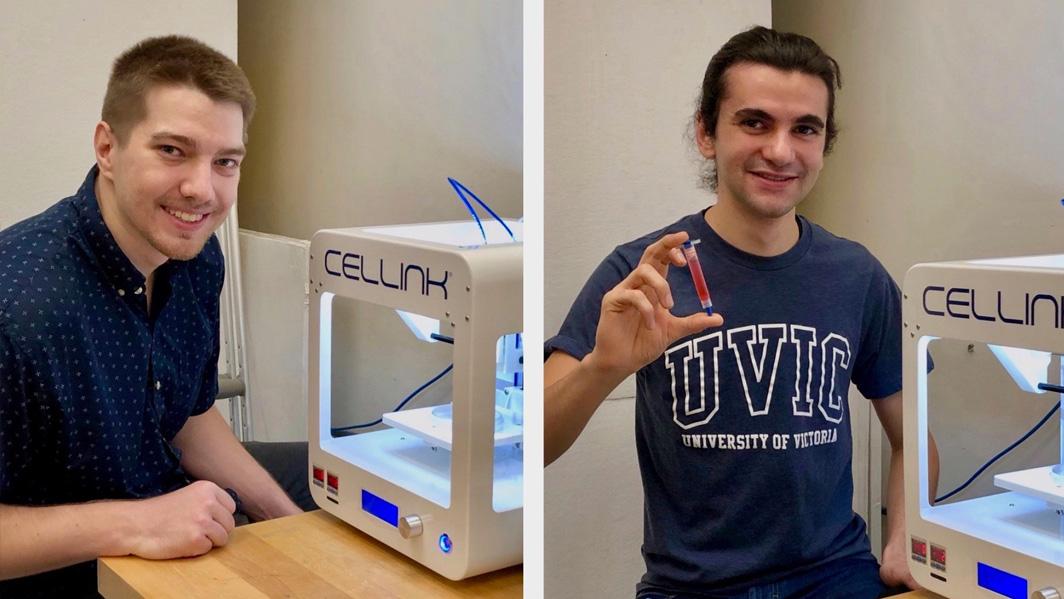Students replicate body parts in the lab
 (L-R) Teaching assistant Dmitri Karaman and fourth-year engineering student Tal Katz enjoyed participating in BME 401.
(L-R) Teaching assistant Dmitri Karaman and fourth-year engineering student Tal Katz enjoyed participating in BME 401.
A fourth-year UVic engineering course gives students the chance to delve into one of the most fascinating and promising areas for the future of medicine: 3D bioprinting.
Bioprinting: 3D Printing Body Parts teaches students how 3D-printing technology can deliver individualized treatments for a wide range of conditions, from printed prosthetics and implants to bioprinted tissues, organs and bones.
The course culminates in a project in which small student teams focus on a client whose needs could be addressed through bioprinting. Their solutions involve replicating or treating a part of the human body using a 3D printer and “bioink,” a substance made of natural or synthetic components that are compatible with living cells.
In one recent class, 35 students worked on projects that included: ear parts designed to correct deformities, breast tissue that could act as a living implant following a mastectomy, a nose-shaped bandage to deliver medication to skin cancer and a replacement for a deteriorating heart valve.
The growing field of 3D bioprinting
“3D printing is a rapidly growing field and the possibilities within healthcare are almost endless,” said Dmitri Karaman, the course TA. “3D bioprinting is still in its early stages, but there’s an enormous amount of research and testing that’s already happening.”
In recent years, 3D bioprinting has become a leading area of the 3D-printing industry, with the expectation that it will have an increasing impact on medical applications. Currently, bioprinting tests drugs and repairs damaged joints and ligaments, but someday it’s hoped that the technology will be able to replace a human organ.
During the UVic course, students learn about the major steps in bioprinting a 3D structure, the ethical and regulatory issues involved, bioprinting materials and areas of the body where certain diseases or injuries often cause problems.
Developing skills for biotech career
Stephanie Willerth, a professor who teaches the course, says she's impressed with the high level of engineering analysis that goes into students’ designs.
“This course shows the ways 3D printing and 3D bioprinting are revolutionizing medical treatments and, by the end of the course, students have gained skills they can use in the biotech industry,” said Stephanie.
Once student teams in the class select a medical condition to address, the required bioinks get ordered from Cellink, a U.S.-based company that also developed the 3D printers used in Stephanie's lab. Different bioinks get used for different applications and could include, for example, alginate from seaweed, cellulose from plants or gelatin from pig hide, as well as various fillers and thickeners. The bioink, which must be compatible with the cells it is treating, gets deposited by the 3D printer in a series of layers to create the final model.
Fourth-year mechanical engineering student Tal Katz was on a team that developed living breast tissue implants designed for use by mastectomy patients.
“I had such a great learning experience in this course and I hope to find a way to keep working on the research I was doing in class,” said Tal.
Read more In the classroom stories.
